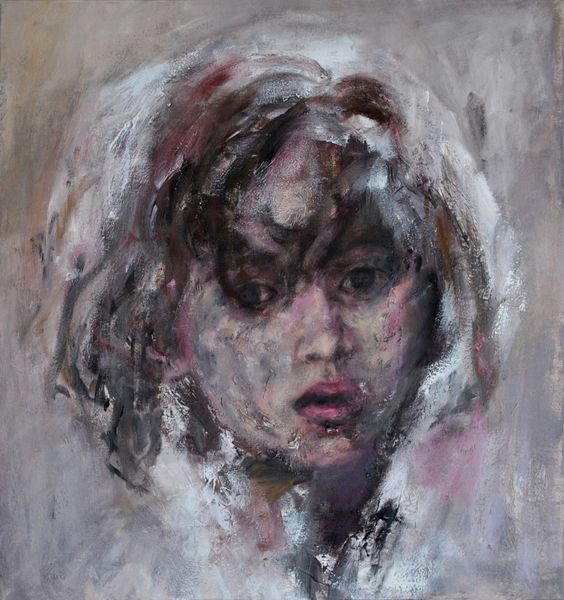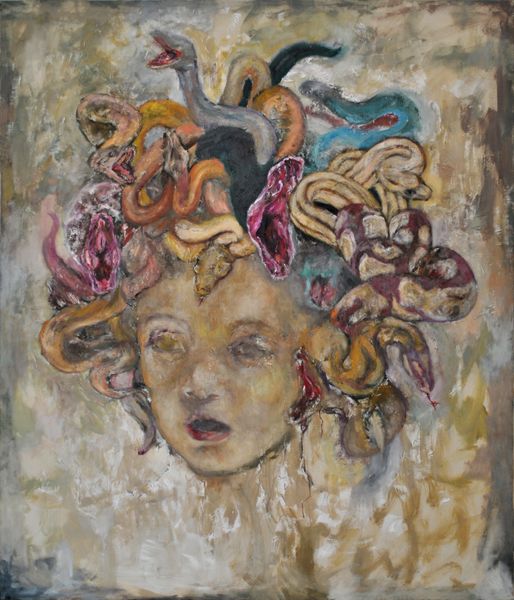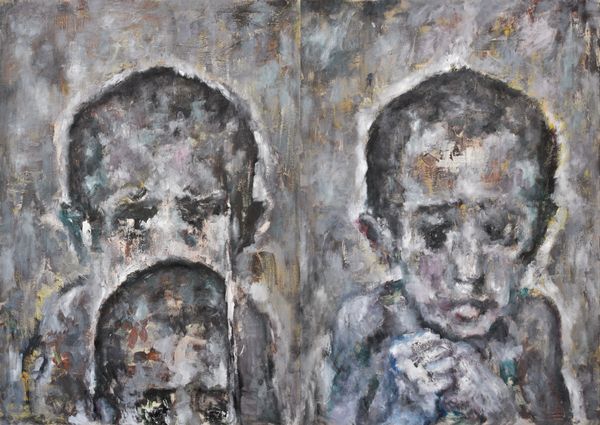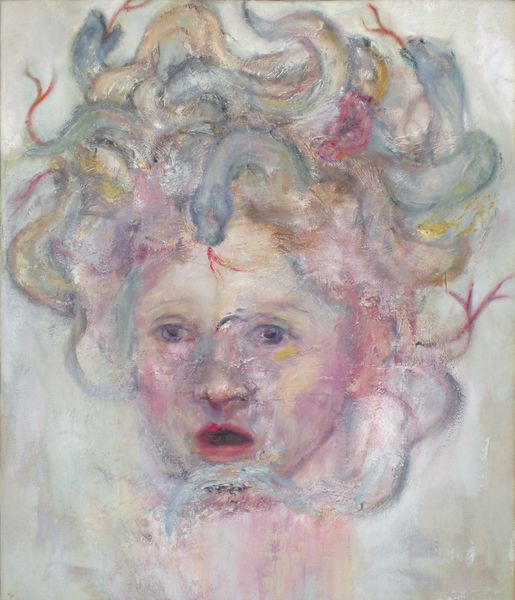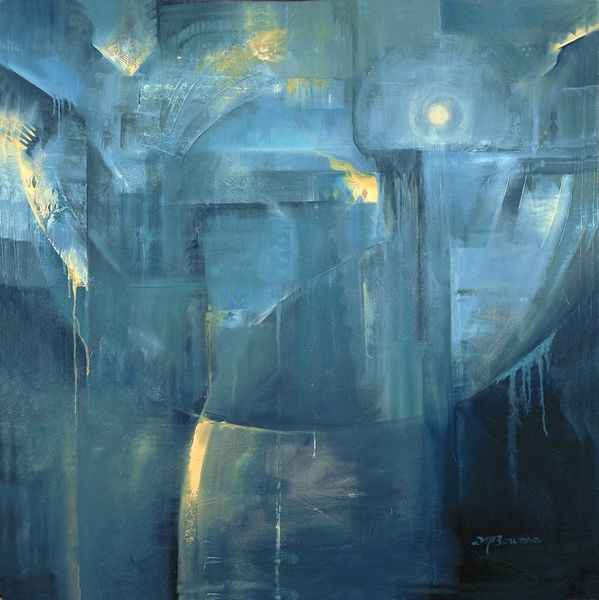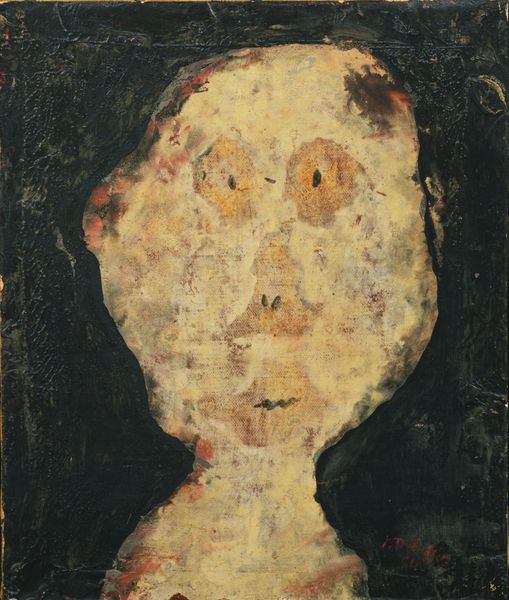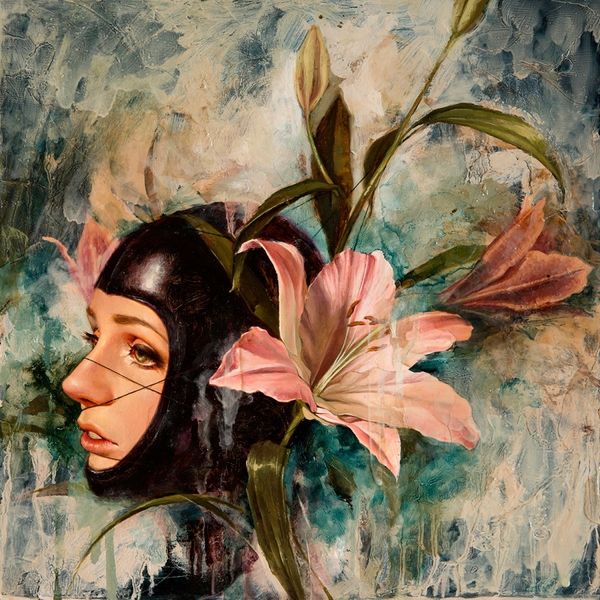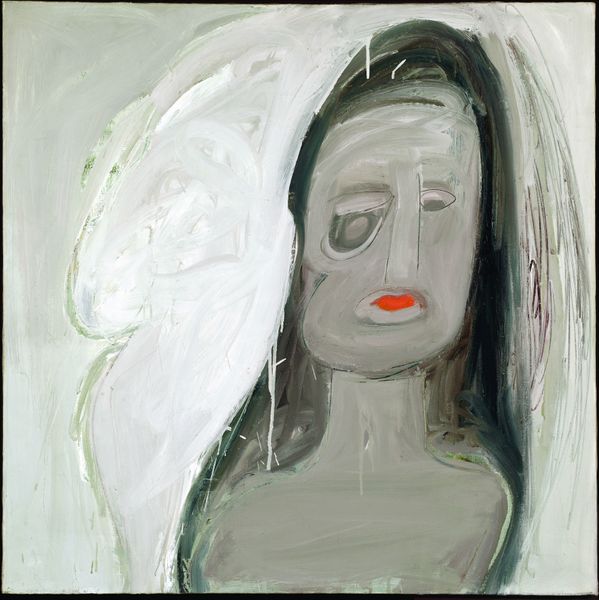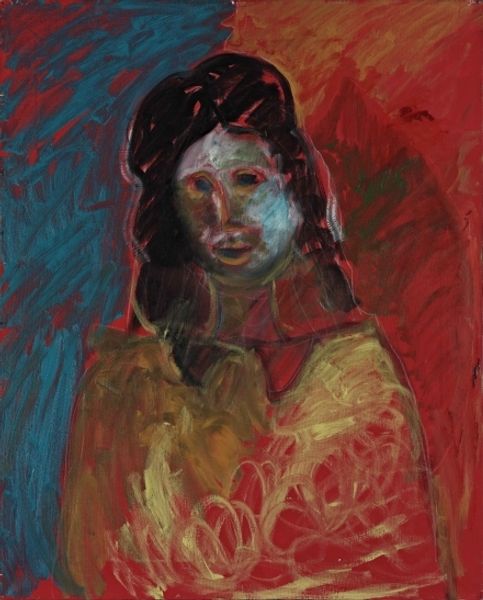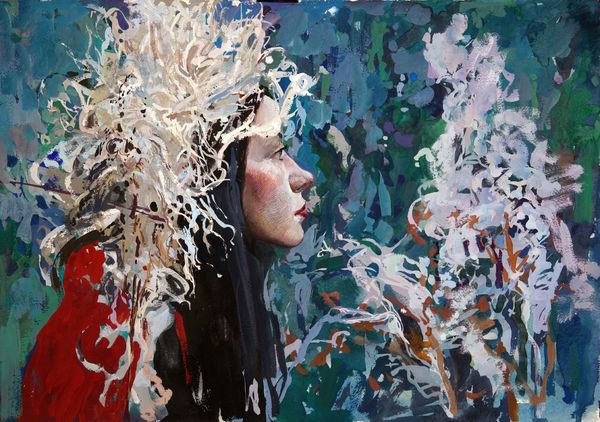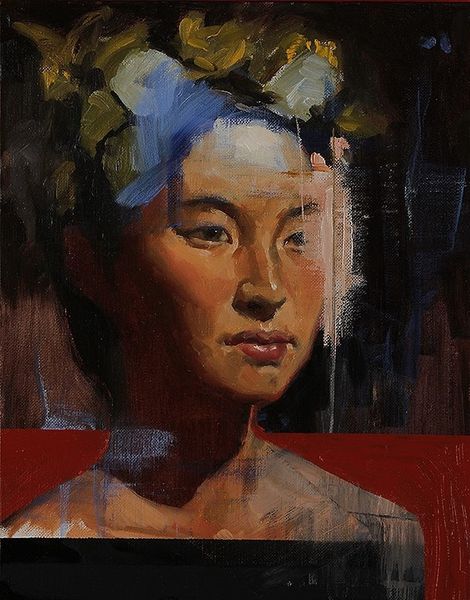
Copyright: Carmen Delaco,Fair Use
Curator: Here we have Carmen Delaco's "Ianus" created in 2013, an oil painting rendered with an impasto technique, adding remarkable texture. What are your initial thoughts? Editor: Well, immediately, the doubled visage creates an atmosphere of unease. The hazy background only heightens the unsettling effect; are they reflections or two distinct entities? Curator: The title itself, "Ianus," lends itself to interpretations of duality. Janus, the Roman god of beginnings, transitions, and doorways, famously depicted with two faces looking in opposite directions. Editor: I see. The artist might be drawing parallels to the fragmented or contradictory aspects of identity and experience, almost a deconstruction of the self within the history of portraiture. Perhaps it suggests the complexity of a single persona, how we perform different roles and identities based on our current circumstance. Curator: And consider the socio-political implications in contemporary portraiture. How identity is constructed and perceived can reflect gender, race, class. In that respect, who has historically had the ability to have their likeness portrayed, and the degree to which that representation was realistic or symbolic carries power dynamics, wouldn’t you agree? Editor: Certainly. Representation carries inherent biases and speaks volumes about societal power structures and values at any given historical point. Considering how technology now allows people to create many versions of themselves across different platforms and how deeply that has impacted our self-perception—this work becomes even more impactful. Curator: This impasto technique contributes to its power, doesn't it? You can clearly see the artist's hand through each distinct stroke. Each application of paint layers on texture and provides movement to the face, imbuing "Ianus" with emotion, making it much more than simply representational. Editor: I agree. It is less about precise physical likeness and more about the internal state and complexities inherent in human experience, reflected in the title's namesake of transition and duality. Curator: Looking at the artwork, then, it opens up spaces for multiple meanings, much like Janus's doorways. Editor: An unsettling, but truly striking contemporary reflection of identity.
Comments
No comments
Be the first to comment and join the conversation on the ultimate creative platform.
